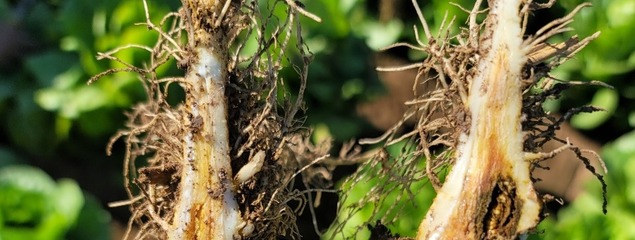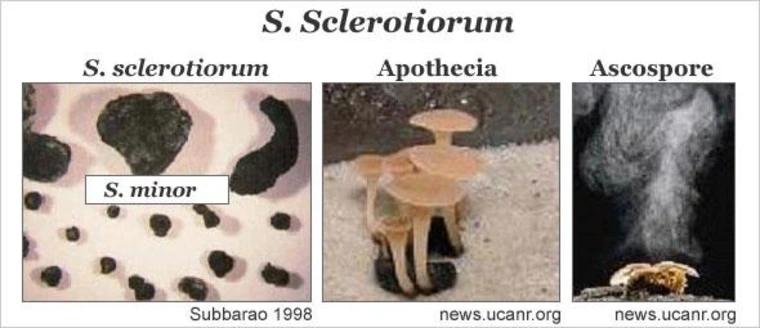
Plant Disease Management
Lettuce Drop
Casual Agent
Lettuce drop is caused by two closely related fungi, Sclerotinia sclerotiorum and S. minor. Both fungi produce hard, durable structures known as sclerotia, which function as survival structures and also as disease inoculum in subsequent lettuce crops.

A notable difference between these fungi is in the type of sclerotia produced: S. sclerotiorum produces large irregular shaped sclerotia in moderate numbers whereas S. minor produces small spherical sclerotia but in far greater numbers. Both fungi are present in the lettuce-growing areas of Arizona and California and infect all lettuce types, but their prevalence in the different production regions is somewhat distinct. In the cooler regions of coastal California, S. minor is the predominant species, whereas, in the much warmer desert production areas of the Yuma and Imperial counties, S. sclerotiorum is the predominant species (Subbarao, K.V. 1998. Plant Dis. 82:1068-1078). However, the occurrence of S. minor in the desert production areas has been significantly increasing in recent years (M. Matheron, T. Turini, pers. comm.) and is considered an emerging challenge to desert lettuce production. Most importantly, both Sclerotinia spp. are regarded as key pathogens in all areas, limiting production efficiency in fields with a significant infestation.


